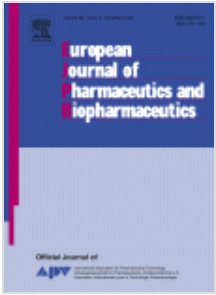E. Kaminska, M. Tarnacka, K. Kolodziejczyk, M. Dulski, D. Zakowiecki, L. Hawelek, M. Zych, G. Garbacz, K. Kaminski
Different experimental and theoretical techniques were applied to investigate basic physical properties of very stable and homogeneous solid dispersions formed by itraconazole and octaacetylmaltose. Differential scanning calorimetry as well as semi-empirical calculations have indicated that liquid crystalline ordering in itraconazole was completely suppressed in the binary mixtures. Molecular dynamics studies with the use of broadband dielectric spectroscopy have shown that the width of the structural relaxation process becomes smaller and fragility drops in solid dispersions with respect to the pure itraconazole. Moreover, the dynamics of secondary relaxation processes was affected by acetylated maltose. As demonstrated, β- and γ-secondary modes shift to higher and lower frequencies, respectively. On the other hand, aging experiments revealed that isostructural relaxation times in the glassy state become systematically longer with the addition of modified carbohydrate. This is a very important finding in the context of the current discussion on the factors affecting physical stability of easily crystallizing APIs. It seems that beside intermolecular interactions and local reorientation, the global mobility might control the crystallization of amorphous solid dispersions. Finally, we have demonstrated that itraconazole in binary mixtures dissolves faster and to greater extent with respect to the crystalline and amorphous form of this API.



